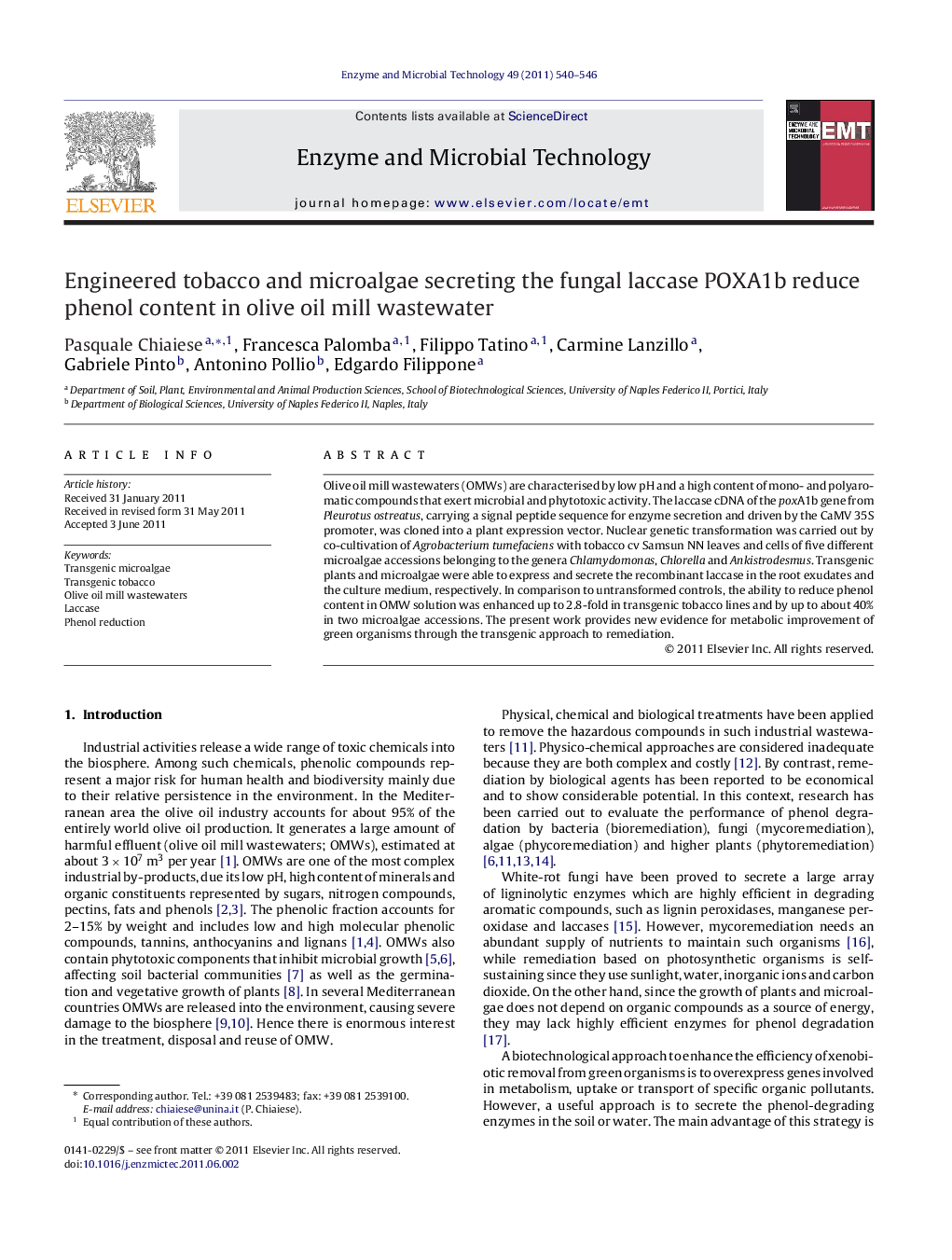| Article ID | Journal | Published Year | Pages | File Type |
|---|---|---|---|---|
| 17329 | Enzyme and Microbial Technology | 2011 | 7 Pages |
Olive oil mill wastewaters (OMWs) are characterised by low pH and a high content of mono- and polyaromatic compounds that exert microbial and phytotoxic activity. The laccase cDNA of the poxA1b gene from Pleurotus ostreatus, carrying a signal peptide sequence for enzyme secretion and driven by the CaMV 35S promoter, was cloned into a plant expression vector. Nuclear genetic transformation was carried out by co-cultivation of Agrobacterium tumefaciens with tobacco cv Samsun NN leaves and cells of five different microalgae accessions belonging to the genera Chlamydomonas, Chlorella and Ankistrodesmus. Transgenic plants and microalgae were able to express and secrete the recombinant laccase in the root exudates and the culture medium, respectively. In comparison to untransformed controls, the ability to reduce phenol content in OMW solution was enhanced up to 2.8-fold in transgenic tobacco lines and by up to about 40% in two microalgae accessions. The present work provides new evidence for metabolic improvement of green organisms through the transgenic approach to remediation.
► The cDNA laccase of fungal poxA1b gene was transferred into genome of Nicotiana tabacum and 5 microalgae species ► The transgenic plants and microalgae correctly expressed the fungal gene. ► The removal ability to OMWs phenols in those green organism were significantly enhanced.
